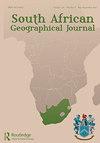法医地貌学在非洲犀牛偷猎调查中的应用
IF 1.4
4区 社会学
Q3 GEOGRAPHY
引用次数: 4
摘要
自2008年以来,南非的犀牛偷猎活动急剧升级。至关重要的是,通过开发/采用新的研究方法和技术来保护南部非洲的遗产,这些方法和技术可以帮助检察官提高定罪的成功率。这篇论文的目的是在没有任何DNA联系的情况下,调查在被偷猎犀牛的背景下使用法医地貌学来协助起诉偷猎者嫌疑人。两个实验研究地点模拟了犀牛通常出没的景观。从穿过景观的嫌疑人身上取出了微量证据,以核实是否可以从在偷猎地点和在模拟偷猎事件中根据偷猎者所利用的地形收集的对照样本中发现任何显著的相似之处。本文认为,所选景观与所收集的痕迹证据之间存在一定的联系。结果表明,第一个实验研究地点表明嫌疑人与偷猎地点之间存在明确的联系,而第二个实验研究地点表明可能存在联系。这项研究仅使用沙粒等无机材料将嫌疑人与现场联系起来。本文章由计算机程序翻译,如有差异,请以英文原文为准。
The application of forensic geomorphology in rhinoceros poaching investigations in Africa
ABSTRACT South Africa experienced since 2008 high escalations in rhinoceros poaching. It is essential to protect southern Africa’s heritage by developing/adapting new research methods and techniques that can assist prosecutors to improve their successes in achieving convictions. The paper aimed to investigate the use of forensic geomorphology in the context of a poached rhino to assist in the prosecution of suspected poachers in the absence of any DNA linkages. Two experimental study sites mimicked the aspects of the landscape in which rhinoceros normally occur. Trace evidence was removed from the suspects that moved through the landscape in order to verify if any significant similarities could be identified against control samples collected at poaching sites and at locations based on the terrain utilized by the poachers during the simulated poaching incident. The paper concluded that a linkage could be recognized between the selected landscape and the collected trace evidence. The results indicate that the first experimental study site illustrated a definite linkage between the suspects and the poaching site, whereas the second experimental study site suggested that there was a possibility that a linkage could be made. This study only used inorganic material such as sand grains to link suspects to scenes.
求助全文
通过发布文献求助,成功后即可免费获取论文全文。
去求助
来源期刊

South African Geographical Journal
GEOGRAPHY-
CiteScore
3.40
自引率
7.10%
发文量
25
期刊介绍:
The South African Geographical Journal was founded in 1917 and is the flagship journal of the Society of South African Geographers. The journal aims at using southern Africa as a region from, and through, which to communicate geographic knowledge and to engage with issues and themes relevant to the discipline. The journal is a forum for papers of a high academic quality and welcomes papers dealing with philosophical and methodological issues and topics of an international scope that are significant for the region and the African continent, including: Climate change Environmental studies Development Governance and policy Physical and urban Geography Human Geography Sustainability Tourism GIS and remote sensing
 求助内容:
求助内容: 应助结果提醒方式:
应助结果提醒方式:


